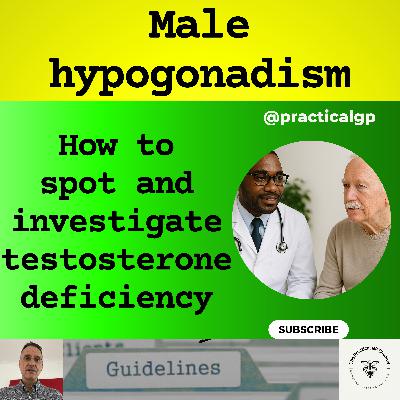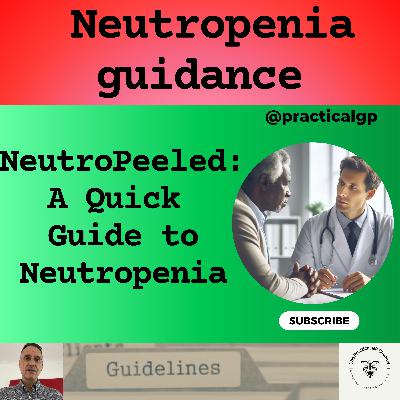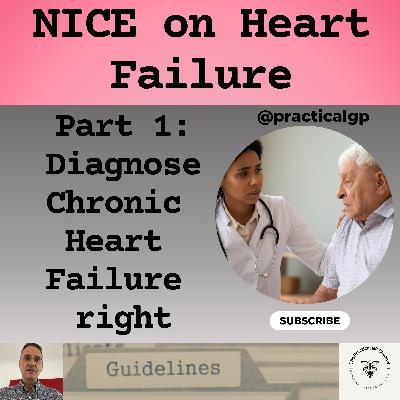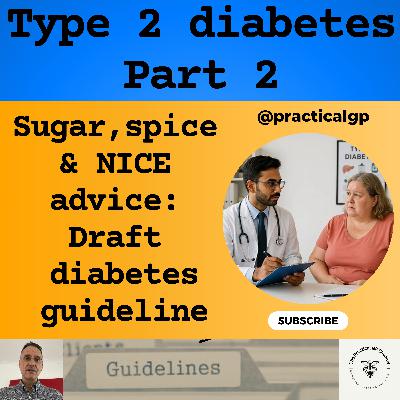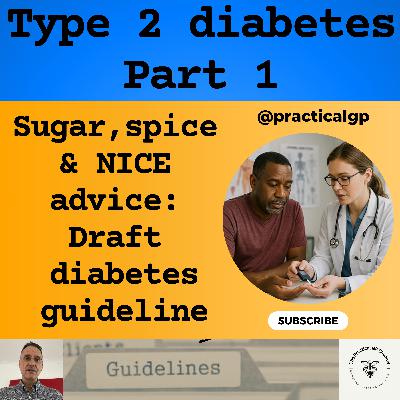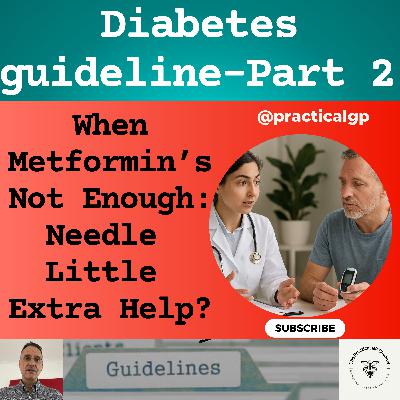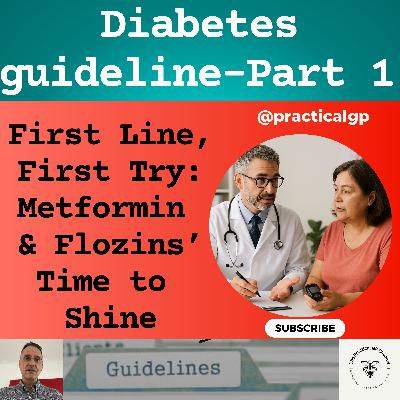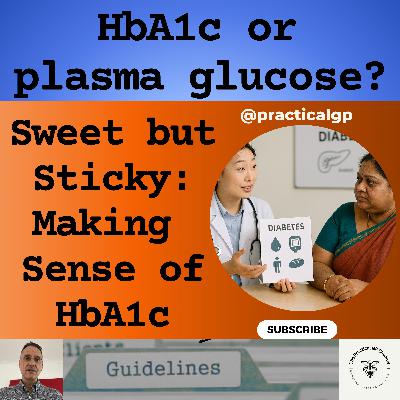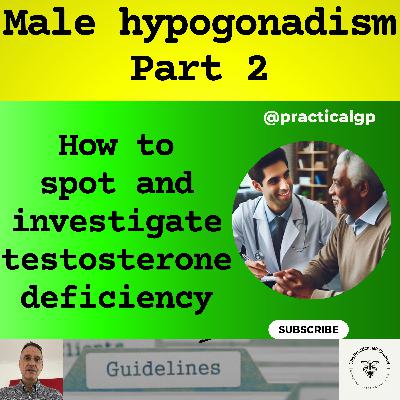Podcast - Man Down: How to Spot and Investigate Low Testosterone - Part 1
Description
The video version of this podcast can be found here:
· https://youtu.be/OcxWFhMAbPQ
This episode makes reference to guidelines produced by the European Association of Urology. The content on this channel reflects my professional interpretation/summary of the guidance and I am in no way affiliated with, employed by or funded/sponsored by them.
My name is Fernando Florido and I am a General Practitioner in the United Kingdom. In this episode I go through the recommendations by the European Association of Urology (EAU) on male hypogonadism, focusing on what is relevant in Primary Care only. The links to the guideline is in the episode description.
Today’s episode covers the definition, classification, causes, and clinical associations of male hypogonadism.
The next episode will focus on the clinical presentation, interpretation of test results, and a brief overview of the management.
I am not giving medical advice; this video is intended for health care professionals, it is only my summary and my interpretation of the guidelines and you must use your clinical judgement.
Disclaimer:
The Video Content on this channel is for educational purposes and not intended to be a substitute for professional medical advice, diagnosis, or treatment. Always seek the advice of your physician or other qualified health provider with any questions you may have regarding a medical condition. Never disregard professional medical advice or delay in seeking it because of something you have read or seen on this YouTube channel. The statements made throughout this video are not to be used or relied on to diagnose, treat, cure or prevent health conditions.
In addition, transmission of this Content is not intended to create, and receipt by you does not constitute, a physician-patient relationship with Dr Fernando Florido, his employees, agents, independent contractors, or anyone acting on behalf of Dr Fernando Florido.
Intro / outro music: Track: Halfway Through — Broke In Summer [Audio Library Release]
- Music provided by Audio Library Plus
- Watch: https://youtu.be/aBGk6aJM3IU
- Free Download / Stream: https://alplus.io/halfway-through
There is a podcast version of this and other videos that you can access here:
Primary Care guidelines podcast:
· Redcircle: https://redcircle.com/shows/primary-care-guidelines
· Spotify: https://open.spotify.com/show/5BmqS0Ol16oQ7Kr1WYzupK
· Apple podcasts: https://podcasts.apple.com/gb/podcast/primary-care-guidelines/id1608821148
There is a YouTube version of this and other videos that you can access here:
- The Practical GP YouTube Channel:
https://youtube.com/@practicalgp?si=ecJGF5QCuMLQ6hrk
The EAU sexual and reproductive health full guideline can be found here:
· https://uroweb.org/guidelines/sexual-and-reproductive-health/chapter/male-hypogonadism
The EAU pocket guideline can be found here:
Transcript
If you are listening to this podcast on YouTube, for a better experience, switch to the video version. The link is in the top right corner of the video and in the episode description.
Hello and welcome! I’m Fernando, a GP in the UK. In today’s episode, we’ll I go through the recommendations by the European Association of Urology (or EAU) on male hypogonadism, focusing on what is relevant in Primary Care only. The link to the guideline is in the episode description.
In today’s episode, we’ll cover the definition, classification, causes, and clinical associations of male hypogonadism.
In the next episode, we’ll focus on the clinical presentation, interpretation of test results, and a brief overview of the management.
Right, let’s jump into it.
Male hypogonadism is a clinical condition characterised by symptoms (with or without physical signs) and confirmed by low testosterone levels. Hypogonadism is linked to reduced testicular function, leading to decreased production of androgens (such as testosterone) and/or impaired sperm production.
This may result from a primary problem within the testes (that is, primary hypogonadism) or from insufficient stimulation by the hypothalamic–pituitary axis (or secondary hypogonadism). In rare cases, it may be due to reduced cellular response to testosterone.
Hypogonadism can negatively affect various organ systems and overall quality of life. This episode focuses on the management of adult male hypogonadism, also known as late-onset hypogonadism (LOH), although it may include some comments on congenital or pre-pubertal forms of the condition.
The prevalence of LOH increases with age, with the major causes being obesity, other co-morbidities (e.g., diabetes) and overall poor health. Ageing accounts for a low percentage of hypogonadism, as there is only a small gradual decline in testosterone, up to the age of 80 years, in healthy ageing men.
There is a high prevalence of LOH within specific populations, including patients with obesity, type 2 diabetes (T2DM), metabolic syndrome (MetS), cardiovascular disease (CVD), chronic obstructive pulmonary disease (COPD), renal disease and cancer. In particular low testosterone levels are relatively common in men with T2DM and in those with metabolic abnormalities.
Klinefelter syndrome, a trisomy associated with a 47,XXY karyotype, is the most prevalent genetic cause of primary hypogonadism, with a global prevalence of 1/500-1,000 live male births. However, < 50% of individuals with Klinefelter syndrome are diagnosed during their lifetime.
Male hypogonadism can be classified according to the cause into primary hypogonadism or secondary hypogonadism. A compensated or subclinical form of hypogonadism, characterised by normal testosterone and a high LH, has also been reported but the clinical significance of this condition is unclear.
The classification of hypogonadism has also been divided into two broad categories: ‘Classical or Organic’ and ‘Functional’.
Classical hypogonadism includes: congenital or acquired diseases causing structural and/or irreversible impairment of the pituitary and/or testes.
Functional hypogonadism is diagnosed in the absence of any recognised organic abnormality and it is mainly a consequence of co-morbidities. It should be treated first by improving the underlying condition (e.g., anorexia in a younger male).
Late onset hypogonadism represents an even broader clinical entity including adult-onset forms which can have an organic or functional origin and can be primary or secondary. Late onset hypogonadism is in the majority of cases diagnosed in the absence of an identifiable organic cause. By definition LOH must comprise both persistent specific symptoms and biochemical evidence of testosterone deficiency.
Finally, as we said earlier, in rare cases, it may be due to reduced cellular response to testosterone and its metabolites.
The European association of urology guideline maintains a classification of Primary and Secondary Hypogonadism, with special reference to LOH.
Classifying hypogonadism by its underlying cause will also help guide treatment options. For example, in secondary hypogonadism, both fertility and testosterone levels can potentially be restored with proper therapy. In contrast, primary hypogonadism usually requires testosterone replacement, which can impair fertility by suppressing the hypothalamic–pituitary–testicular (HPT) axis.
We need to remember that when hypogonadism develops after puberty—especially as men age—its symptoms may be mild and often mistaken for normal ageing.
Let’s now look at some common causes for the three main categories of male hypogonadism. Please note that this list is not exhaustive.
In Primary Hypogonadism we can have congenital and acquired causes.
Common congenital causes of primary hypogonadism include:
- Klinefelter syndrome – the most common
- Other chromosomal disorders, like Down syndrome
- And also, conditions like sickle cell disease, amongst others
Acquired causes of primary hypogonadism include:
- Drug-related like, for example, in
- Chemotherapy drugs and
- Testosterone synthesis blockers like ketoconazole
- Direct testicular damage, like, for example:
- Bilateral orchidectomy or testicular trauma
- Radiation to the tes

